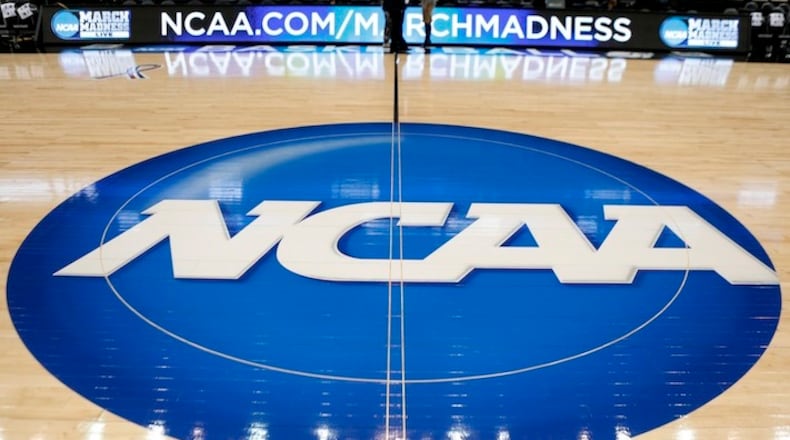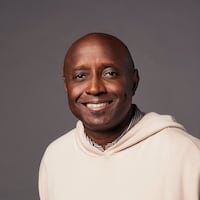NCAA schools commercialized intercollegiate sports long ago. There was no turning back once they decided to maximize revenues from media-rights deals, sponsorships, tickets and “donations” for the right to buy those tickets. College sports are professional in every way except the money isn’t shared with athletes who do the work and are the draws for audiences.
That’s why I’ve long advocated for college athletes to be granted the same labor rights as all other workers, including earning their full market value. Public sentiment has shifted drastically in that direction. Even the far-right wing justices on the Supreme Court have taken a dim view of the “amateur” model in college athletics.
Sooner rather than later, the NCAA should be forced to finally abandon its cartel system so athletes can be fairly compensated for their work. But it’s not just about paying them. Once athletes win workers’ rights, they also would be protected by laws that penalize coaches who abuse and harass them.
That’s the focus of research by Michael LeRoy, a professor at the University of Illinois’ school of labor and employment relations and its college of law.
“I never thought of the protection in the context of coaching abuse, which is emerging as a significant phenomenon,” LeRoy said. “It never occurred to me for years and years.”
LeRoy said that changed when he served on the athletics board at Illinois. He saw firsthand how coaches can take advantage of athletes who have no labor protections.
LeRoy said that if athletes were classified as employees, they would have much stronger protections against abuse by coaches. Accusations that now are investigated internally by colleges with a vested interest in finding no wrongdoing by their employees would instead be conducted by outside entities with the force of law. There’s a chance that the courts will help make that happen soon.
Currently, the Third Circuit Court of Appeals is hearing a case, Johnson v. NCAA, in which it will decide if athletes can be considered employees under the Fair Labor Standards Act. A similar case in 2016 was dismissed at a lower level. Johnson has advanced further in the wake of the Supreme Court ruling unanimously against the NCAA in a case in June 2021.
If athletes are classified as employees, then they could file a Title VII complaint via the federal Equal Employment Opportunity Commission or seek relief for physical and psychological abuse through state workers compensation laws. Schools who are found to be in violation would be on the hook for compensatory and punitive damages. In addition, LeRoy said that one section of the Title VII law includes “fairly robust” provisions against employers retaliating against employees who report wrongdoing or protest it.
LeRoy said all those protections are needed because abuse of athletes by coaches is a serious issue in college athletics. Research that LeRoy published in the Berkeley Journal of Employment & Labor Law showed an increase in the frequency of lawsuits by athletes alleging harassment and abuse. LeRoy found 59 state and federal cases from 2014-19, with 31 of those cases arising from player and coach interactions.
LeRoy argues that those court filings represent only a fraction of the grievances by athletes.
“The sample of (59) court cases implies a universe of one-thousand NCAA harassment, abuse, and medical mistreatment grievances,” LeRoy wrote in the law-review article while citing an empirical study by Richard E. Miller and Austin Sarat.
LeRoy extended his search beyond legal databases to include online news stories about abuse. He found an additional 15 reports of alleged athlete abuse. That sample doesn’t include the former athletes at Ohio State, Michigan and Michigan State who came forward after years of silence to accuse school physicians of abuse.
“Like many cases in the (lawsuit) sample, athletes accused not only their perpetrators but also high-level university administrators for failing to heed their concerns,” LeRoy wrote.
If athletes were classified as employees, they could take their complaints to external government authorities to investigate.
“I think it would help,” LeRoy said in an interview. “I understand that organizations need to investigate internally, but there (also) has to be a separate and independent channel. Otherwise, the reporting will lead to a dead end in the best of circumstances and a lot of time leads to retaliation.”
Athletes can’t depend on their schools to protect them. The NCAA puts a lot of effort into ensuring athletes don’t receive benefits that are impermissible for everyone in college sports except them. College officials do very little about ensuring athletes who have little power are protected from abuse by coaches who have lots of it.
In fact, NCAA lawyers have argued in court that schools have no legal obligation to protect athletes. It’s not hard to predict the outcomes of that callous approach to athlete safety. They include sexual abuse of athletes, mishandling of concussions and athletes dying or suffering serious injuries during workouts ordered by coaches.
Athletes have gained some power with the NCAA’s liberalized transfer rules. Athletes who suffer abuse can switch schools without penalty rather than staying in toxic situations. However, LeRoy said the transfer portal doesn’t curtail abuses by coaches. Athletes who transfer still fear speaking out because coaches have so much power over their futures.
“There’s a code in NCAA athletics, and the code is ‘Don’t snitch on your coach’ because if you do that, other coaches won’t be so interested in you,” LeRoy said.
Ultimately, LeRoy said lawmakers will have to protect athletes with legislation that designates them as employees. The NCAA has been fighting against that outcome for decades. “Student-athlete” is a propaganda term coined in the 1950s by the NCAA. At the time, the organization was fighting against paying worker’s compensation claims to the widow of a college football player who died from a head injury he sustained while playing.
The NCAA won that case. Since then, multiple courts have allowed schools to engage in actions that would be antitrust violations in every other industry. But there’s hope that lawmakers eventually will take action to protect athletes.
Elected officials in Congress from both parties have introduced bills that expand the labor rights of athletes. Last year Jennifer Abruzzo, general counsel for National Labor Relations Board, wrote in a memo that she believes some college athletes qualify as employees under the National Labor Relations Act. Those athletes have the right to “act collectively to improve their terms and conditions of employment,” Abruzzo wrote.
The courts also seem to be coming around in favor of more labor rights for athletes.
The Supreme Court found in 2021 that schools couldn’t put limits on compensation for academic-related purposes. It didn’t address the issue of direct compensation for athletes or classifying them as employees. However, the ruling left open the possibility of future challenges to the NCAA’s exploitative model, with Justice Brett Kavanaugh ridiculing it in a concurring opinion.
LeRoy said he isn’t sure if that Supreme Court ruling will lead to more legal losses for the NCAA. Despite the skepticism of the justices about the collegiate model, the legal precedent allowing schools to collude to prohibit pay for athletes remains in place. LeRoy said the legislation would be the “cleanest solution” for protecting the labor rights of college athletes.
“It would resolve any ambiguity,” he said. “Even if we get a favorable ruling for athletes, if it’s a wage-and-hour matter it doesn’t necessarily mean they are employees. In Title VII, it’s implied but a court ruling doesn’t have the same effect.”
If the courts won’t classify athletes as employers, then lawmakers should make it so. Then athletes not only would be paid market compensation, they also would be protected from abusive coaches.
About the Author
The Latest
Featured

